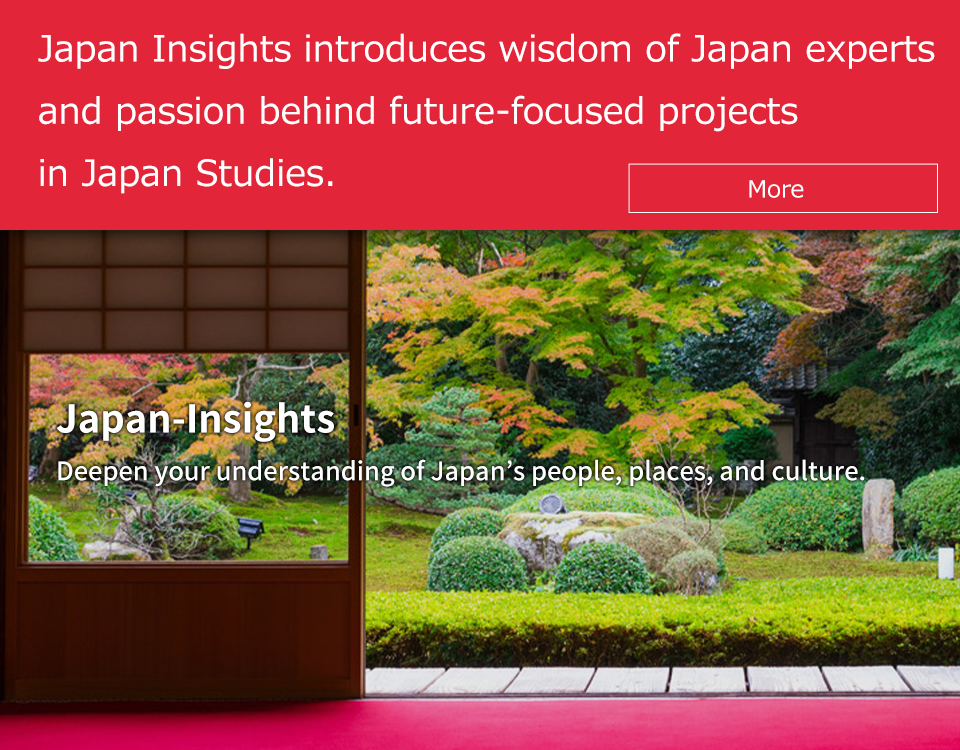Win a Free Trip to Japan!
Experience cherry blossoms and ancient temples
Japan boasts a rich and intricate culture, making it a treasure trove for cultural enthusiasts seeking profound experiences. With a blend of traditional arts, flavorful cuisine, and vibrant festivals, the country offers a unique perspective on history and social structures. Within this comprehensive guide to Japan insights, we will explore various dimensions of Japanese society, from its artistic heritage to modern trends, providing valuable information for those eager to deepen their understanding of this fascinating nation. Whether you’re planning a visit or simply wish to expand your knowledge, this guide serves as your gateway to Japan’s cultural tapestry.
Understanding Japanese Culture: An Overview
Japan boasts a rich tapestry of culture that intertwines tradition and modernity. Understanding Japanese culture involves appreciating its unique characteristics and historical context. Here are some key Japan Insights that help illuminate this profound heritage:
- Historical Foundations: Japan’s culture is deeply influenced by its history, from the feudal era to the Meiji Restoration. The synthesis of Shintoism and Buddhism plays a significant role in shaping societal values.
- Core Values: Harmony (wa), respect (keii), and purity (seijaku) are pivotal in Japanese life. These values manifest in daily interactions and traditional practices, emphasizing community and social cohesion.
- Artistic Expression: Traditional arts such as tea ceremonies (chanoyu), ikebana (flower arranging), and calligraphy (shodō) reflect Japan’s aesthetic sensibilities. These forms emphasize simplicity, nature, and beauty, resonating with the Japanese concept of “wabi-sabi.”
- Social Structures: Family and community hold immense importance. The concept of "amae," which refers to the behavior of depending on others for emotional support, underscores interpersonal relationships.
- Everyday Life: The blending of old and new permeates everyday life in Japan—from ancient temples nestled beside modern skyscrapers to traditional markets amid contemporary shopping districts.
By exploring these elements, one gains valuable Japan Insights that enrich understanding of this fascinating culture, paving the way for deeper appreciation of its nuances.

Traditional Arts and Crafts in Japan
Japan boasts a rich tapestry of traditional arts and crafts, each reflecting the nation’s history, beliefs, and aesthetic values. These crafts not only serve functional purposes but also embody the spirit and culture of Japan. Here are some key areas to explore within this fascinating subject:
- Pottery and Ceramics: Japanese pottery, such as Raku and Imari, emphasizes natural beauty and craftsmanship. These pieces often showcase intricate glazes and shapes.
- Textiles: Traditional weaving techniques like Nishijin-ori (Kyoto) and Bingata (Okinawa) highlight the intricate patterns and vibrant colors that define Japanese textiles.
- Calligraphy: Known as Shodo, this art form showcases the beauty of Japanese characters, emphasizing grace and fluidity in each stroke.
- Woodblock Printing: Techniques like Ukiyo-e have notably influenced global art. These prints illustrate landscapes and scenes from everyday life, encapsulating historical narratives.
- Ikebana: The art of flower arrangement, known as Ikebana, reflects the Japanese philosophy of simplicity and harmony with nature.
In summary, the exploration of traditional arts and crafts offers valuable Japan Insights into the cultural and historical context of the nation. Engaging with these forms not only reveals the dedication of artisans but also invites enthusiasts to appreciate the nuanced beauty ingrained in Japanese culture.
Cuisine: A Journey Through Japanese Flavors
Japanese cuisine is a vibrant tapestry woven from tradition, regional diversity, and seasonal availability. It emphasizes freshness, presentation, and balance, making it not just a meal but an experience. Here are some essential elements and popular dishes that exemplify Japan Insights into this rich culinary landscape:
-
Ingredients:
- Rice: The staple of every Japanese meal, symbolizing prosperity and nourishment.
- Fish: Integral to diets, offering a variety of flavors and textures.
- Vegetables: Often seasonal, they play a crucial role in maintaining balance and health.
-
Popular Dishes:
Dish Description Sushi Vinegared rice paired with raw fish Ramen Noodle soup with rich, umami broth Tempura Battered and fried vegetables or seafood Okonomiyaki Savory pancake with diverse ingredients -
Dining Etiquette:
- Respect the food: Use chopsticks correctly; avoid sticking them upright in rice.
- Appreciate the meal: Say "Itadakimasu" before eating and "Gochisosama deshita" after.
Thus, each meal serves not only as sustenance but also as a reflection of Japan’s heritage. Japan Insights into its culinary traditions reveal a culture deeply rooted in respect for nature and community. Exploring these flavors will enhance your understanding and appreciation of Japan’s unique identity.
Festivals and Celebrations: A Cultural Calendar
Japan is a tapestry of vibrant festivals and celebrations that reflect its rich cultural heritage. Understanding these events offers deep Japan Insights into the nation’s traditions and social fabric. Here, we explore some of the most significant festivals throughout the year:
- New Year (Shōgatsu): Celebrated from January 1st, Shōgatsu marks the start of the year with family gatherings, traditional foods like osechi, and visits to shrines.
- Cherry Blossom Festivals (Hanami): In spring, locals gather under blooming cherry trees for picnics, appreciating the fleeting beauty of the blossoms.
- Gion Matsuri: Held in Kyoto throughout July, this festival features stunning floats, street parties, and traditional music, showcasing Japan’s vibrant community spirit.
- Tanabata (Star Festival): Celebrated in July or August, participants write their wishes on colorful paper strips and hang them on bamboo branches.
- Obon: A Buddhist holiday in August, Obon honors ancestors with dance festivals (Bon Odori) and lantern ceremonies.
| Festival | Month | Key Activities |
|---|---|---|
| New Year | January | Family meals, shrine visits |
| Cherry Blossom | March-April | Picnics, hanami viewing |
| Gion Matsuri | July | Floats, performances |
| Tanabata | July/August | Wish-making, street decorations |
| Obon | August | Bon Odori dance, lantern lighting |
Each festival not only showcases unique practices but also fosters a sense of community. Embracing these celebrations provides rich Japan Insights, deepening your appreciation of Japanese culture.

The Role of Religion in Japanese Society
Religion plays a pivotal role in shaping Japanese culture and societal norms. With a unique blend of Shinto, Buddhism, and other spiritual beliefs, Japan’s religious landscape is both fascinating and complex. Here are some key insights into how religion influences everyday life in Japan:
-
Shinto and Buddhism:
- Shinto: As the indigenous faith, Shinto emphasizes nature worship and ancestral reverence. This ethos permeates various aspects of Japanese life, from festivals to ceremonies.
- Buddhism: Introduced in the 6th century, Buddhism complements Shinto beliefs, often observed in funeral rites and meditation practices.
-
Modern Practices:
- Many Japanese practice a fusion of both religions, participating in Shinto rituals for life events and Buddhist ceremonies for deaths, showcasing a remarkable religious adaptability.
- Religious festivals and rituals remain vibrant, with events like hanami (cherry blossom viewing) inherently tied to Shinto beliefs, demonstrating an appreciation for beauty and nature.
-
Impact on Society:
- Religion serves as a social glue, fostering community ties through shared practices and celebrations.
- Tokyo’s numerous shrines and temples, rich in history and culture, reflect the enduring importance of religion in the modern Japanese context.
By understanding these Japan Insights regarding the role of religion, enthusiasts can appreciate how deeply ingrained these beliefs are in the fabric of Japanese society and culture.
Language and Communication: Key Insights
Understanding the nuances of language and communication in Japan is crucial for any cultural enthusiast. The Japanese language, with its unique structure and intricate politeness levels, offers profound Japan Insights into social dynamics. Here are some key aspects to consider:
-
Language Structure:
- Japanese uses three scripts: Kanji (Chinese characters), Hiragana, and Katakana.
- Each plays a distinct role in writing, enhancing expression.
-
Politeness Levels:
- Japan’s language features varying levels of politeness, reflecting the societal hierarchy.
- Key forms include:
- Casual (Tee form): Used among friends.
- Polite (Masu form): Standard for conversations with strangers or superiors.
- Honorifics (Sonkeigo): Expresses respect and deference.
-
Non-Verbal Communication:
- Body language, gestures, and facial expressions play significant roles.
- For instance, a nod often signifies agreement, while silence can communicate contemplation or disapproval.
-
English Proficiency:
- While English education has increased, proficiency varies.
- In urban regions, many individuals speak some English, making Japan Insights accessible through both languages.
In summary, grasping the complexities of Japanese language and communication enhances your understanding of the culture. Engaging with locals and adapting to their communication styles will undoubtedly enrich your experience in Japan.
Exploring Japanese Architecture and Design
Japanese architecture and design merge tradition and modernity, providing a rich tapestry that reflects the country’s cultural ethos. Here are some remarkable aspects to consider when exploring Japan Insights in this realm:
Traditional Elements
- Tatami Rooms: These are made of straw matting and provide a unique atmosphere centered around simplicity and natural materials.
- Shoji Screens: Sliding doors made of wooden frames with translucent paper offer flexibility and natural light while maintaining privacy.
- Engawa: A traditional wooden walkways that bridge indoor and outdoor spaces, emphasizing harmony with nature.
Modern Influences
- Minimalism: Contemporary Japanese design often embraces minimalist principles, focusing on clean lines and uncluttered spaces.
- Sustainable Architecture: Many new developments showcase eco-friendly materials, integrating technology with nature.
Comparison: Traditional vs. Modern
| Aspect | Traditional Architecture | Modern Architecture |
|---|---|---|
| Materials | Wood, rice paper, bamboo | Glass, steel, sustainable materials |
| Design Philosophy | Nature integration, simplicity | Innovation, functionality |
| Aesthetic | Harmony, asymmetry | Boldness, urban chic |
In summary, understanding Japanese architecture and design provides valuable Japan Insights that unveil the nuances of cultural identity. Whether admiring ancient temples or contemporary skyscrapers, one can appreciate how these elements tell a story of resilience and adaptation.

Contemporary Japan: Modern Trends and Influences
Contemporary Japan captures the essence of a nation that beautifully blends tradition with innovation. This dynamic interplay creates unique cultural phenomena worth exploring. Here are some prominent trends and influences shaping modern Japan:
Technology and Innovation
- Robotics: Japan leads in robotics, with humanoid robots becoming part of daily life.
- Digital Culture: From anime to games, Japan’s digital content heavily influences global pop culture.
Fashion
- Street Style: Cities like Harajuku and Shibuya showcase vibrant youth culture with eclectic fashion that often mixes traditional and modern elements.
- Luxury Brands: Japanese designers combine minimalism with exquisite craftsmanship, gaining international acclaim.
Art and Design
- Contemporary Art: Artists like Yayoi Kusama contribute to global art movements while staying rooted in Japanese aesthetics.
- Architecture: Innovations in sustainable design reflect modern challenges while respecting historical context.
Music and Entertainment
- J-Pop and J-Rock: Japanese music continues to evolve, incorporating Western influences while maintaining its distinctive style.
- Film and Anime: Japanese films and anime have become staples worldwide, resonating with diverse audiences.
Exploring these trends through Japan Insights reveals a society that embraces change while cherishing its rich heritage. Modern Japan stands as a testament to the country’s ability to harmonize the old with the new, offering endless avenues for cultural enthusiasts to delve deeper into its complexities.
Travel Tips for Cultural Enthusiasts
Exploring Japan offers countless opportunities to immerse yourself in its rich culture. Follow these travel tips to enhance your experience and uncover unique Japan Insights:
- Plan Ahead: Research local customs, etiquette, and cultural events. Understanding these nuances can help you engage more authentically with locals.
- Learn Basic Japanese Phrases: Knowing greetings and polite expressions can go a long way. Simple phrases like "Arigatou" (thank you) or "Sumimasen" (excuse me) will endear you to residents.
- Participate in Local Workshops: Try your hand at traditional arts, such as calligraphy, tea ceremonies, or pottery. Workshops are a fantastic way to gain deeper Japan Insights.
- Use Public Transportation: Japan’s rail system is efficient and extensive. Consider getting a Japan Rail Pass for unlimited travel on most trains, enhancing your ability to explore various cultural sites.
- Visit Off-the-Beaten-Path Locations: While famous landmarks are a must-see, hidden gems often reveal authentic cultural experiences. Seek suggestions from locals or travel guides.
- Respect Cultural Sites: Always adhere to rules at temples and shrines, such as bowing or removing shoes. These gestures reflect deep-rooted traditions worth observing.
- Engage with Locals: Strike up conversations in markets or cafes. Locals can provide valuable Japan Insights that enhance your understanding of their culture.
By following these tips, you’ll ensure a richer and more fulfilling journey through Japan’s vibrant culture.
Resources for Further Exploration of Japanese Culture
For cultural enthusiasts keen to dive deeper into the rich tapestry of Japanese culture, a variety of resources are available. These resources provide Japan Insights that can enrich your understanding and appreciation of this fascinating society.
Suggested Resources:
Books:
- “The Tale of Genji” – A classic piece of literature that provides insights into Heian-era Japan.
- “Japanese Culture: A Cultural History” – Offers an overview of Japan’s traditional and contemporary cultural practices.
Documentaries:
- “The Art of Japanese Tea” – Explores the history and significance of tea in Japan.
- “Tokyo: The City of Dreams” – An insightful look at the evolution of Japan’s capital.
Websites:
- Japan National Tourism Organization (JNTO) – Provides valuable information on culture, festivals, and travel tips.
- NHK World – A comprehensive resource for news, culture, and entertainment from Japan.
Cultural Workshops:
- Participate in local Ikebana (flower arrangement) or calligraphy classes to gain practical experience.
- Join martial arts classes, such as Aikido or Karate, to understand the discipline and philosophy underpinning these practices.
Incorporating these resources into your exploration can significantly enhance your Japan Insights, allowing you to appreciate the multifaceted nature of Japanese culture. Whether you are reading books, viewing documentaries, or engaging in hands-on experiences, each resource offers unique perspectives that contribute to a richer understanding of Japan.
Frequently Asked Questions
What are the key cultural aspects to explore in Japan?
Japan is a country rich in cultural traditions and modern influences. Key aspects include its unique art forms such as Ikebana (flower arranging), traditional tea ceremonies, and calligraphy. Additionally, Buddhism and Shintoism play significant roles in Japanese spirituality and cultural practices. Festivals, such as Hanami (flower viewing) and Matsuri (seasonal festivals), offer insights into local customs. Moreover, experiencing traditional crafts like pottery and textiles can deepen your understanding of Japan’s culture.
How can I engage with Japanese culture authentically?
To engage authentically with Japanese culture, consider participating in cultural classes or workshops that teach traditional arts such as origami, pottery, or cooking. Visiting local markets and temples offers a glimpse into everyday life and traditions. Furthermore, try to learn basic Japanese phrases, as it shows respect and willingness to connect with locals. Engaging with Japanese people and participating in community events can also enhance your cultural experience.
What are some must-visit cultural sites in Japan?
Japan is home to numerous cultural sites that are a must-visit for enthusiasts. Notable locations include Kyoto’s Kinkaku-ji (Golden Pavilion) and Fushimi Inari Taisha, famous for its thousands of vermillion torii gates. The historic city of Nara boasts Todai-ji Temple, housing a giant Buddha statue. For a blend of history and modernity, visit Tokyo’s Asakusa district, where the Senso-ji Temple resides alongside contemporary shopping areas. Each site offers a unique perspective on Japan’s rich heritage.
What role does food play in Japanese culture?
Food is an integral part of Japanese culture, reflecting its history and traditions. Japanese cuisine is characterized by meticulous preparation, seasonal ingredients, and presentation aesthetics. Dishes such as sushi, ramen, and tempura are not only popular but also carry historical significance. Traditional dining practices, including Kaiseki (multi-course dinner), emphasize harmony and balance. Food is often a social experience in Japan, celebrated through festivals and communal gatherings, highlighting its importance in daily life.
What cultural etiquette should I be aware of when visiting Japan?
When visiting Japan, it’s essential to observe local etiquette to show respect. Bowing is a common form of greeting, and it’s polite to remove shoes when entering homes or certain traditional establishments. Always use both hands when giving or receiving items, including business cards. Eating while walking is generally frowned upon, as is tipping in restaurants. Additionally, be mindful of quietness in public transport and spaces; maintaining a serene environment is a valued cultural norm.
